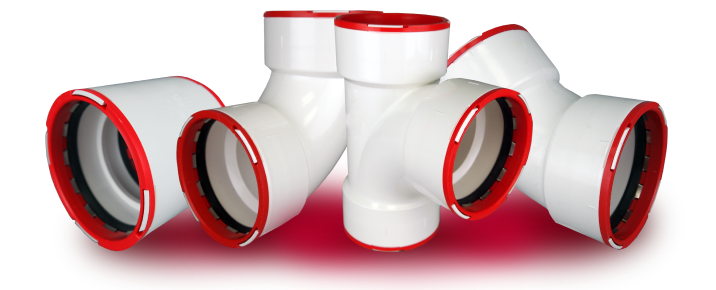
Connects Right. Seals Tight. Every Time.®
Because there are no solvent cements or adhesives, ConnecTite fittings do not have any cure time. As a result, you can begin using your plumbing system immediately after installing ConnecTite fittings.
After cutting the pipe square, you should sand the outside end of the pipe with the provided sponge in order to remove any burrs and to create a bevel to make insertion easier. In order to make it easier to insert the pipe, apply liquid soap to the end of the pipe.
With a ConnecTite fitting, you can simply twist the fitting into proper alignment. This is helpful when you are using a fitting with a bend (90° Elbow, 45° Elbow or Sanitary Tee). If you have a misaligned fitting with solvent cement, the only option you have is to cut out the joint and start completely over.
If pipe is cut too short or too long, you can remove the pipe from the ConnecTite fitting, cut your pipe to the correct length and then reuse the same ConnecTite fitting up to three times. Again, with solvent cement your only option is to cut out the joint and start completely over.
Yes. ConnecTite fittings are compatible with both ABS and PVC pipe.
Yes. All you have to do is simultaneously twist and pull the pipe and fitting apart. Unlike push-fit pressure fittings, ConnecTite fittings do not require a tool for reversal.
Yes. Like all Charlotte Pipe products, ConnecTite fittings are made in the USA.
The metal lock ring in the ConnecTite fitting bites into the pipe and prevents it from backing out of a ConnecTite fitting.
No. ConnecTite fittings can only be used in Drain, Waste and Vent (DWV) applications. They should never be used for any pressure applications.
ConnecTite fittings are certified by NSF as meeting all of the requirements of ASME A112.4.4, as well as IAPMO IGC 334. In addition, ConnecTite fittings are certified by IAPMO as meeting all of the requirements of IAPMO IGC 334.
Check the engraving on the fitting for “NSF® dwv” and the UPC Shield. Also, you can search for listings to these standards at http://info.nsf.org/Certified/Plumbing/ and http://pld.iapmo.org/.
In UPC jurisdictions, ConnecTite fittings manufactured to ASME A112.4.4 are approved for use with ABS and PVC pipe in Underground and Aboveground Drain, Waste Vent Pipe and Fittings as well as Building Sewer applications per 2021 UPC, Table 701.2
In IPC jurisdictions, ConnecTite Fittings manufactured to ASME A112.4.4 are approved for use with ABS and PVC pipe in Above-ground and Underground drainage as well as Building Sewer applications per 2021 IPC, Table 702.4 Pipe Fittings as well as sections 705.2.4 and 705.10.4.
In addition, ConnecTite fittings are permitted to be used at the discretion of the code official. All of the model plumbing codes have provisions for approval of new products that are not yet specifically referenced in the codes (UPC Section 301.3; IPC Section 105.2).